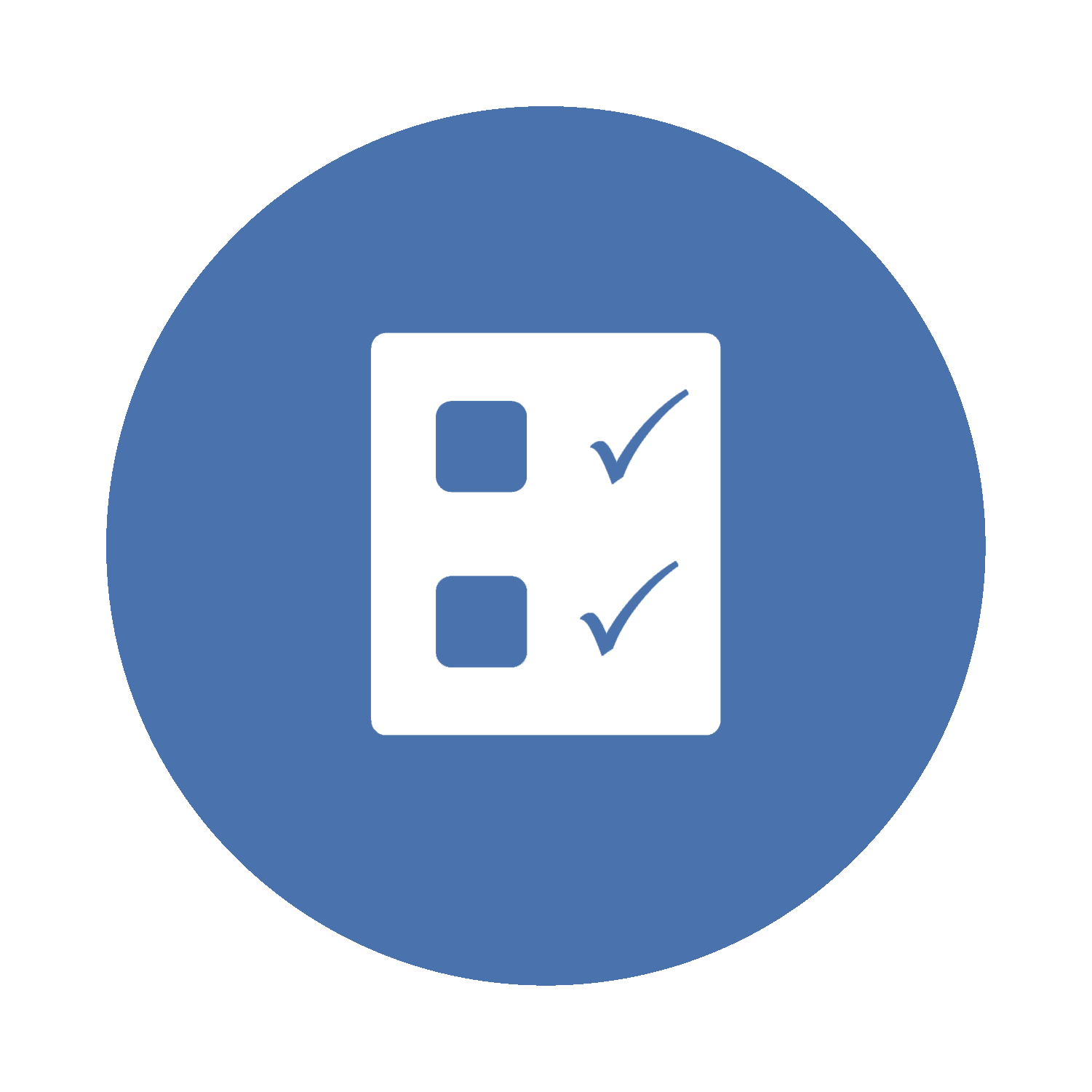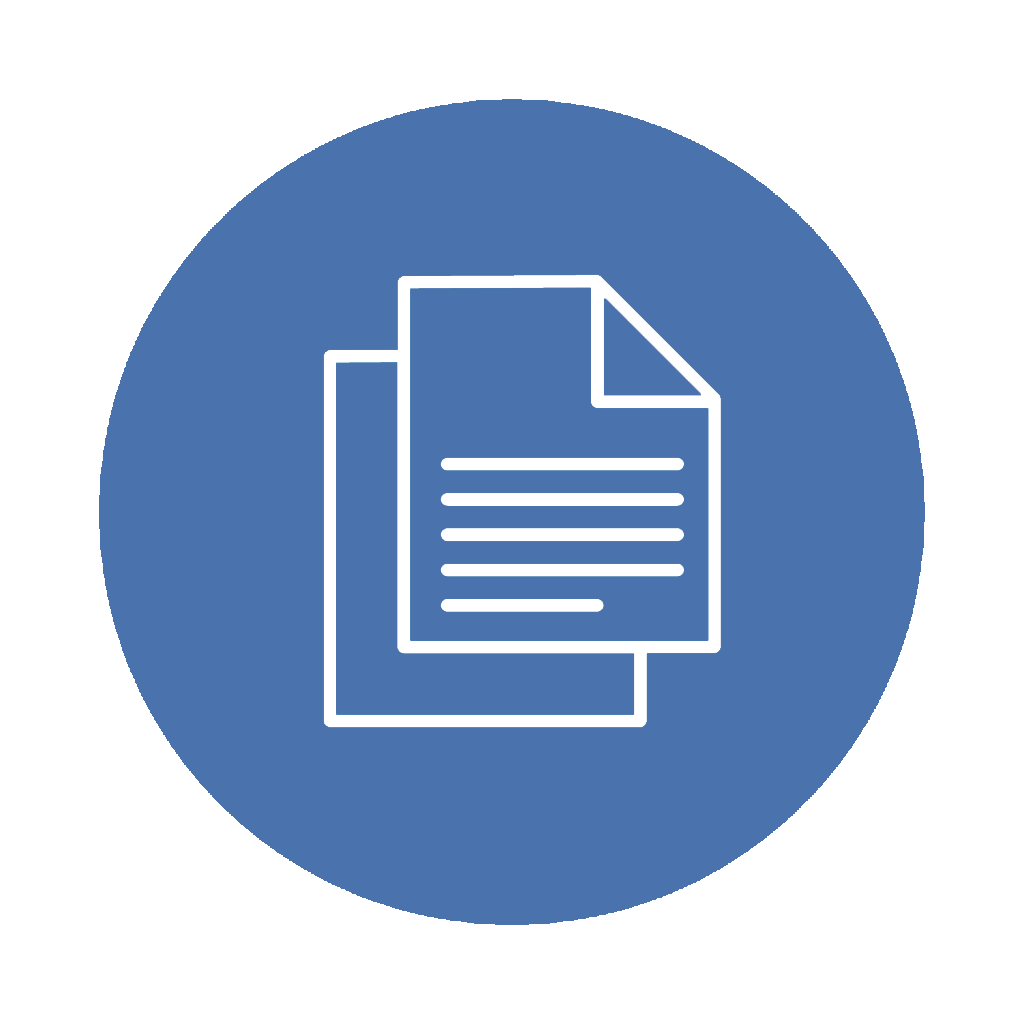04. Enterprise IS Governance, Risk Management, and Controls
04.01. IT Governance Frameworks

 Briefly reflect on the following before we begin:
Briefly reflect on the following before we begin:
- What are the primary objectives of IT governance in an organization?
- Why is it essential for an organization to have a structured IT governance framework?
- Can you imagine a real-world scenario where IT governance played a crucial role in decision-making?
- How might the choice of an IT governance framework impact the overall performance of an organization?
The principles of IT governance are based on a simple notion: technology must align with business objectives. This alignment is critical for ensuring IT investments deliver value while mitigating risks. In this section, we will examine the nature and role of IT governance and recognize that governance is not just about control but about steering IT to contribute effectively to an organization’s overall strategy.
We then delve into the two primary governance frameworks – COSO and COBIT. Both provide a comprehensive model for establishing, assessing, and enhancing organizations’ effective governance, risk management, and internal control systems. We will review the underlying philosophies, core components, and their relevance in augmenting the GEIT in organizations. The comparative analysis will further solidify our understanding of the two frameworks, highlighting their distinctive features and contexts where each framework excels.
The Nature and Role of IT Governance
IT governance is a strategic framework that aligns IT with business goals for achieving organizational success and sustainability. At its core, IT governance ensures that IT investments reflect and support an organization’s business objectives. It’s a balancing act, aligning IT resources and systems with the organization’s mission and values. Without this alignment, it can become a misdirected effort, failing to contribute to overall business success.
Beyond alignment, IT governance oversees IT-related decisions, ensuring they are made in the organization’s best interest while mitigating all relevant IT risks. In a world where technology evolves rapidly, risks can be unpredictable and potentially damaging. Effective IT governance provides a framework for identifying, analyzing, and mitigating these risks. Another crucial aspect of IT governance is value delivery. It needs more IT to support business strategies; IT must add value to the organization through improved efficiency, competitive advantage, or enhanced customer satisfaction. IT governance frameworks guide organizations in achieving and measuring this value, ensuring that IT contributes positively to its success. IT governance also plays a vital role in resource management by ensuring that IT resources –financial, human, or technological – are utilized optimally. This optimal utilization is not just about cost savings; it is about maximizing the impact of IT investments. The nature of IT governance also involves a strong focus on performance measurement to quantify the impact of IT. Performance metrics and indicators under IT governance frameworks provide objective data on IT’s contribution to the organization, facilitating informed decision-making and continuous improvement.
Compliance and standardization are other critical elements of effective IT governance. Compliance becomes a significant concern as organizations navigate an increasingly complex legal and regulatory environment. IT governance frameworks provide guidelines and best practices, ensuring that IT systems and processes comply with legal and regulatory requirements. On the other hand, standardization ensures consistency and reliability in IT processes and services. In implementing IT governance, stakeholder engagement, from the board and executives to the IT team and end-users, must understand and support the governance framework. This widespread engagement is vital for effective implementation as it ensures that IT governance is not just a top-down mandate but a shared organizational culture.
Lastly, IT governance is dynamic and evolving. As technologies and business environments change, so must IT governance frameworks. This adaptability is crucial for ensuring that the governance framework remains relevant and effective in guiding IT to meet new challenges and leverage emerging opportunities.
An Overview of COSO Internal Control Framework and Its Components
Originating from the Committee of Sponsoring Organizations of the Treadway Commission (COSO), it provides a pivotal model for effective internal control within organizations. This framework is a comprehensive guide that aids in optimizing internal control systems, essential for robust IT governance. Hence, understanding the COSO Internal Control Framework is vital to grasping the essentials of IT governance.
At its core, the COSO framework revolves around the notion that
“Internal control is an ongoing and evolving process designed to provide reasonable assurance regarding the achievement of several key objectives in effectiveness and efficiency of operations, reliability of financial reporting, and compliance with applicable laws and regulations.”[1]
The COSO framework is structured around five interrelated components. These components work collectively to provide a foundation for effective internal control.
| Technique | Description | Example in Context of IS Auditing |
|---|---|---|
| Control Environment | The control environment sets the tone at the top of an organization. It reflects the organization’s culture, values, and the environment in which IT operates. The control environment in IT includes the policies, procedures, and standards governing IT operations. It’s about establishing a tone at the top that values security, reliability, and compliance in the IT sphere. The control environment in IT also involves leadership commitment, emphasizing the importance of IT in achieving organizational goals. | The organization has a culture of IT security awareness, where top management sets a clear tone regarding the importance of information security and compliance. Regular training sessions are conducted for employees on cybersecurity best practices and the importance of following IT policies and procedures. |
| Risk Assessment | Risk assessment in the IT context involves identifying and evaluating risks specific to IT operations. These risks could range from cybersecurity threats to data breaches and system failures. The IT risk assessment process is dynamic, continuously evolving with technological advancements and changes in the business environment. It’s about understanding what can go wrong in IT and preparing strategies to manage these risks effectively. | During an IS audit, a risk assessment process is conducted where potential risks such as data breaches, unauthorized access, system failures, and compliance risks are identified and analyzed. The auditor assesses the likelihood and impact of these risks on the organization’s information systems. |
| Control Activities | Control activities in IT are the policies and procedures that help mitigate identified risks. These activities include network security protocols, access controls, and data encryption practices. They are the practical steps taken to ensure that IT objectives are achieved. Control activities in IT also extend to change management processes, ensuring that changes in IT systems do not compromise security or efficiency. | Implement specific IT control activities such as strong password policies, firewalls, encryption of sensitive data, regular software updates, and segregation of duties within the IT department. Auditors check these controls to ensure they are effectively mitigating identified IT risks. |
| Information and Communication | Information and communication underscore the importance of relevant and reliable information flow. Effective communication of IT policies, procedures, and standards is crucial. This component ensures that IT governance and control information is disseminated throughout the organization. It also involves open communication channels where feedback and concerns regarding IT can be raised and addressed. In IT, this component supports transparency and informed decision-making. | Establishing clear communication channels for reporting IT security incidents. There is a well-defined process for documenting and communicating IT procedures and policies throughout the organization. IS auditors assess how information about IT risks and controls is disseminated and whether it is effectively communicated. |
| Monitoring | Monitoring in IT involves regularly reviewing and assessing the IT governance framework. This process includes evaluating the effectiveness of IT controls and ensuring they are up to date with current risks and technologies. Monitoring in IT is not a one-time event; it’s an ongoing process that ensures the IT governance framework remains practical and relevant. | The organization regularly reviews and updates its IT security measures. This includes conducting periodic internal IT audits, monitoring network traffic for unusual activities, and checking access logs to detect unauthorized attempts to access sensitive data. IS auditors evaluate the effectiveness of these monitoring activities in identifying and addressing IT security issues. |
The COSO framework also emphasizes the importance of integration to ensure an organization’s holistic view of internal controls. The components are interrelated; a lapse in one area can affect another. For example, ineffective communication can undermine the effectiveness of control activities. This holistic approach perspective turns the COSO framework into a strategic asset beyond mere compliance focus. When implemented effectively, it helps organizations manage risks, optimize operations, and ensure compliance with laws and regulations. It also supports reliability in financial reporting, which is critical to maintaining stakeholder trust.
See the COSO website for more details on the COSO Control Environment.
An Overview of the COBIT Framework and Its Components
The COBIT (Control Objectives for Information and Related Technologies) Framework was developed by the Information Systems Audit Control Association (ISACA) to address the management of IT and its alignment with organizational goals. COBIT’s foundation is built on the principle that IT needs to be managed and governed, focusing on delivering value to the business. It emphasizes the importance of aligning IT processes with business objectives and connects the business’s requirements, goals, and objectives with IT systems and procedures. A defining feature of COBIT is its comprehensive coverage of IT governance, encompassing a wide range of IT management aspects, from risk management and information security to value delivery and performance measurement. COBIT’s framework is structured into domains and processes that provide a clear and detailed road map for effective IT governance.
The COBIT framework is divided into multiple domains, each addressing a specific aspect of IT governance. These domains cover areas such as “Align, Plan and Organize”; “Build, Acquire and Implement”; “Deliver, Service and Support”; and “Monitor, Evaluate and Assess.” Within these domains, COBIT outlines a series of processes that provide a structured approach to managing IT. Each method has clear objectives, inputs, outputs, and activities to ensure a thorough and disciplined approach to IT governance.
| Technique | Description | Example in Context of IS Auditing |
|---|---|---|
| Align, Plan and Organize (APO) | This domain focuses on achieving strategic alignment between IT and business objectives, ensuring that IT solutions and services support the organization’s goals and strategies. It involves planning and organizing IT resources effectively to achieve business objectives, managing IT investments, and ensuring that IT adds value to the business. This domain also covers aspects such as risk management and IT architecture. | During an IS audit, the auditor evaluates how the organization’s IT strategy aligns with its business objectives. This includes assessing the IT planning process, how IT investments support business goals, and how risks are managed. For instance, the auditor might review the IT strategic plan and risk management policies to ensure they align with the overall business strategy. |
| Build, Acquire and Implement (BAI) | This domain deals with identifying, developing, acquiring, and implementing IT solutions. It encompasses the processes involved in determining business requirements, selecting and procuring technology solutions, developing or configuring these solutions, and implementing them within the business environment. It also covers change management and project management aspects to ensure successful deployment and integration of IT services. | The auditor focuses on how IT solutions are identified, developed, and implemented in this domain. An example would be reviewing the software acquisition and development processes to ensure they meet business requirements and comply with standards. This could involve assessing project management practices, change control procedures, and software testing and implementation processes. |
| Deliver, Service and Support (DSS) | Focused on the delivery and support of IT services, this domain addresses the operational management of IT. It includes ensuring that IT services are delivered as per the agreed levels of service, managing IT service support functions like service desk and incident management, and addressing end-user needs. It also encompasses security management, data management, and operational controls. | Here, the IS auditor evaluates the delivery and support of IT services. For instance, they might assess the effectiveness of the IT service desk, the incident management process, and how IT service levels are managed and met. This could include reviewing service level agreements (SLAs), analyzing incident and problem management records, and assessing user satisfaction with IT services. |
| Monitor, Evaluate and Assess (MEA) | This domain is centred on continuously monitoring, evaluating, and assessing IT processes and services. It involves ensuring that IT governance processes are practical and efficient, assessing IT performance against predefined metrics, and conducting regular reviews and audits. This domain is critical for maintaining oversight of IT governance and ensuring compliance with policies and regulatory requirements. | This domain involves continuously monitoring and assessing IT governance practices and processes. An IS auditor might review how the organization monitors and assesses IT performance, including the effectiveness of internal controls. This could involve examining IT performance metrics, internal audit reports, and compliance with regulatory requirements. |
At the heart of COBIT 5 are five fundamental principles that form the framework’s foundation and guide its application in any organization.
- The first principle, ‘Meeting Stakeholder Needs,’ focuses on creating value for stakeholders by aligning IT goals with business objectives, ensuring that IT delivers the expected benefits. This principle emphasizes the importance of understanding and meeting the needs and expectations of various stakeholders.
- The second principle, ‘Covering the Enterprise End-to-End,’ extends the scope of governance by covering all aspects of IT, including non-IT functions. It recognizes that IT is integrated throughout the enterprise, and effective governance must encompass the entire organization.
- The third principle, ‘Applying a Single Integrated Framework,’ aligning COBIT 5 with other relevant standards and frameworks, creating a comprehensive governance system. This integration simplifies and strengthens governance by providing a consistent approach across various frameworks.
- The fourth principle, ‘Enabling a Holistic Approach,’ introduces a set of enablers, such as processes, organizational structures, and information, which are the building blocks of IT governance. They work together to support implementing and maintaining governance and management systems.
- The final principle, ‘Separating Governance from Management,’ clarifies the distinct roles of governance and management. Governance ensures that stakeholder needs, conditions, and options are evaluated to determine balanced, agreed-on enterprise objectives. On the other hand, management plans, builds, runs, and monitors activities in alignment with the direction set by the governance body.
COBIT also strongly emphasizes measuring and monitoring performance through metrics and maturity models that enable organizations to measure the effectiveness of their IT governance. These tools are vital for assessing performance, identifying areas for improvement, and demonstrating compliance with governance objectives. Another critical aspect of COBIT is its flexibility, such that the framework can be tailored to fit different organizations’ unique needs and circumstances. Whether a small business or a multinational corporation, COBIT provides the flexibility to adapt its principles and practices to suit various environments.
Applying COBIT in IT governance involves understanding and implementing its principles and practices. It requires a commitment to continuous improvement and a willingness to adapt the framework to the organization’s context. Effective implementation of COBIT enhances IT governance, leading to improved IT management, better risk management, and increased value delivery.
See the ISACA website for more details on the COBIT Control Environment.
Comparative Analysis of the COSO and COBIT Frameworks
COSO and COBIT frameworks reveal distinct yet complementary approaches to IT governance and internal control.
COSO is centred around internal control with a broader organizational scope and is designed to provide a model for evaluating and enhancing corporate internal control systems. It covers risk assessment, control environment, control activities, information and communication, and monitoring. While it applies to all aspects of an organization, including IT, its approach is not IT-specific.
COBIT, on the other hand, is primarily focused on IT governance and provides a comprehensive framework that aligns IT processes and goals with business objectives. It emphasizes managing and controlling information and technology to drive business value. COBIT’s holistic approach covers end-to-end governance and enterprise IT management. The framework structures its guidance into domains and processes, offering a detailed IT governance and management roadmap.
A critical difference between COBIT and COSO is their primary focus. COBIT is explicitly designed for IT governance, providing a framework that directly addresses the nuances and challenges of governing IT resources. COSO, conversely, has a broader application, managing internal control within the entire organization. It focuses on establishing and maintaining adequate internal controls across all processes, not solely within the IT domain.
Despite these differences, both frameworks emphasize aligning objectives and processes with the organization’s goals. They recognize the necessity of risk management, the significance of a robust control environment, and the need for effective communication and monitoring. Integrating COBIT and COSO within an organization can provide a comprehensive approach to IT governance and internal control. COBIT’s IT-specific guidance can be used to structure and manage IT governance processes. At the same time, COSO’s principles can be applied to ensure robust internal control across all organizational processes, including IT. An effective integration of COBIT and COSO involves leveraging the strengths of each framework. COBIT’s detailed IT governance model can guide the management of IT resources and processes. At the same time, COSO’s principles can be applied to ensure that these IT processes operate within a robust internal control environment.
Other Relevant IT Governance Frameworks
Beyond the familiar frameworks of COSO and COBIT, various other frameworks are available, each bringing a unique perspective and tools to support an organization’s IS governance. The box below aims to shed light on some of these alternative frameworks, broadening our understanding of the different approaches to IT governance.
Alternative Frameworks for IT Governance
ITIL
The Information Technology Infrastructure Library (ITIL) framework primarily focuses on IT service management (ITSM). It provides a detailed set of practices for managing IT services, aligning them with the needs of the business. ITIL’s strength lies in its comprehensive approach to service delivery and service management processes. It emphasizes continual improvement and is particularly effective in managing service-level agreements, incident management, and customer satisfaction in IT services.
See the ITLI Open Guide website for more details.
ISO/IEC 27001
The ISO/IEC 27001 standard is focused on information security management and helps organizations secure their information assets through a systematic approach to managing sensitive company information. ISO/IEC 27001 is particularly relevant in today’s digital age, where information security is paramount. It provides a robust model for establishing, implementing, operating, monitoring, and improving an information security management system (ISMS).
See the ISO website for more details.
Balanced Scorecard
The Balanced Scorecard, originally a strategic management tool, has also found applications in IT governance. It assists in translating an organization’s vision and strategy into operational objectives and performance metrics reporting across four perspectives: financial, customer, internal processes, and learning and growth. In IT governance, the Balanced Scorecard can be adapted to ensure IT objectives are aligned with business strategies, creating a balanced view of IT performance.
See the Balanced Scorecard Institute website for more details.
Risk IT
The Risk IT framework, another initiative by ISACA, complements COBIT by focusing specifically on IT-related risks. This framework guides on identifying, governing, and managing IT risks. It’s a valuable tool for organizations looking to enhance their risk management practices in IT. Risk IT helps understand and manage IT risk in the context of business risk, bridging the gap between business and IT perspectives on risk management.
See the ISACA website for more details.
VAL IT
Additionally, there’s the Val IT framework, also developed by ISACA. Val IT complements COBIT by focusing on value delivery from IT investments. It guides the evaluation and selection of IT investments, managing their implementation, and extracting business value. Val IT benefits organizations seeking to enhance their IT investment decisions and ensure that these investments deliver the intended business value.
See the ISACA website for more details.
When considering these frameworks, it’s essential to recognize that no single framework can be a panacea for all IT governance challenges. Organizations often benefit from a hybrid approach, selecting elements from various frameworks that best suit their needs and objectives. The choice of framework(s) depends on several factors, including the organization’s size, nature of business, regulatory environment, and specific IT challenges. In practice, the implementation of these frameworks should be tailored. It involves understanding the organization’s context, aligning the framework with strategic objectives, and integrating it with existing processes and systems. Effective implementation also requires stakeholder engagement, continuous monitoring, and adaptation to changes in the business environment.
 In the Spotlight
In the Spotlight
For additional context on the importance and role of IT Governance frameworks, please read the article titled “The Value of IT Governance” [opens in new tab].
Curtis, B. (2020). The value of IT governance. ISACA Industry News. https://www.isaca.org/resources/news-and-trends/industry-news/2020/the-value-of-it-governance
 Key Takeaways
Key Takeaways
Let’s recap the key concepts discussed in this section by watching this video.
Source: Mehta, A.M. (2023, December 6). AIS OER ch 04 topic 01 key takeaways [Video]. https://youtu.be/XcqICnRJqkA
 Knowledge Check
Knowledge Check
 Essay Questions
Essay Questions
- Explain the primary purpose of IT Governance in an organization.
- How does implementing the COSO Internal Control Framework in an IT environment enhance organizational governance and risk management? Provide a detailed explanation.
- Discuss the key differences and similarities between COBIT and COSO frameworks and explain how they can be effectively integrated into an organization for optimal IT governance.
- Analyze how IT governance frameworks like COBIT and COSO can be adapted in a technology startup. Consider the unique challenges and needs of a startup environment.
 Mini Case Study
Mini Case Study
XYZ Corporation, a mid-sized financial services firm, is experiencing rapid growth and increased reliance on technology. They have recently faced several challenges, including misalignment between IT and business objectives, inefficiencies in IT service management, and concerns over data security and regulatory compliance. The CEO of XYZ Corporation is considering implementing IT governance frameworks but is still determining whether to choose COBIT, COSO, or a combination of both. As an IT governance consultant, you have been tasked with providing a recommendation based on the following specifics:
- The company has a complex IT infrastructure comprising legacy systems and new technologies.
- They are subject to strict financial regulations and must ensure data security and compliance.
- The IT department has been traditionally separate from the business units, leading to the misalignment of objectives.
- XYZ Corporation aims to streamline its IT processes to improve efficiency and reduce costs.
Required: Based on these specifics, what would your recommendation be? Justify your answer with a detailed explanation.
- COSO. (2013). Internal control - integrated framework [opens a PDF]. Committee of Sponsoring Organizations of the Treadway Commission. https://www.coso.org/_files/ugd/3059fc_1df7d5dd38074006bce8fdf621a942cf.pdf ↵
The process of managing IT resources effectively, including human resources, infrastructure, and applications.
The use of various metrics to measure the efficiency and effectiveness of IT processes and controls.
Adherence to established standards, regulations, and other stipulated requirements relevant to IS.
Structured systems of guidelines and practices that provide the basis for managing and controlling IT processes and risks.
The process of managing changes to the IT environment, including software updates, infrastructure changes, and policy revisions.
The flow of relevant and reliable information regarding IT governance and controls throughout the organization.
Regular review and assessment of the IT governance framework to ensure its effectiveness and relevance.
Processes established within an organization to ensure the reliability of financial reporting, effective operations, and compliance with laws and regulations.
The implementation and management of quality IT services that meet the needs of the business, typically aligned with ITIL practices.
The process of protecting information and information systems from unauthorized access, use, disclosure, disruption, modification, or destruction.
Communicating key performance indicators related to the audit subject matter.

